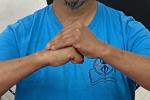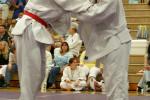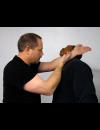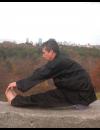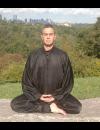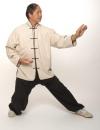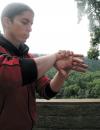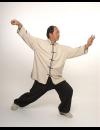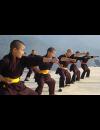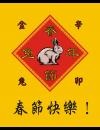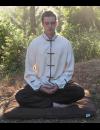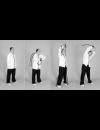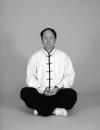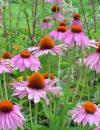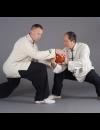A Closer Look at Single-Handed Swords
June 24, 2024
The sword is just a tool, a means to accomplish a goal. In the end, victory is determined as much by the skills of the swordsmen as the types of swords they wield or armor they wear. 12 Min Read
Meet the Author! Joe Varady discusses sword-fighting, H.E.M.A and lightsabers with Gene Ching
June 19, 2024
The Importance of Belonging to the Wulin
June 17, 2024
YMAA Staff writer Gene Ching ruminates on the society and culture of martial artists known as the wǔlín. 6 Min Read
Kuzushi: This Judo Stuff Works!
June 10, 2024
Kuzushi works both in throwing and ground techniques. It’s based on sound mechanical principles as well as the forces of gravity. 8 Min Read
Tai Chi and Qigong for Arthritis and Pain
June 3, 2024
Hypoxia, which is an oxygen deficiency in the tissues, underlies or complicates almost every health condition. This is the reason I have proposed the term Metarobic exercise to describe the effects of Tai Chi and related exercises on the body. 9 Min Read
Self-defense: Down and Dirty
-
May 9, 2011
Let's start with one, very simple thing—power generation. A traditional martial artist is taught how to hit hard. Different systems have different methods of power generation, but two of the most common involve a solid connection with the ground and good structure.
More Benefits From the Sunset and Sunrise Tai Chi
-
May 2, 2011
Most of us are shallow breathers. Some of the mind-body prescriptions from both series, Sunset Tai Chi and Sunrise Tai Chi, will introduce you to various breathing techniques, which will develop your lungs and over time you will become a deep breathing individual.
Benefits of Sunrise and Sunset Tai Chi Series
-
April 25, 2011
Most of us experience relief and joy when the end of the working day has come. For our own health, when the end of the day is here it is time to change pace and let go. This “letting go” can be different for each of us as it is a time to relax and recharge. The faster we let go of past activities and focus on the present to refresh, gather forces, and dissolve the tension and stress from the day, the quicker we will be able to enjoy the rest of the evening.
World Tai Chi & Qigong Day Across the World—April 30, 2011
-
April 18, 2011
On the last Saturday of April each year, the entire world is invited to move together, to breathe together—one world, one breath. World Tai Chi & Qigong Day is celebrating its 13th anniversary day on April 30.
Qigong Training Theory
-
April 13, 2011
Every qigong form or practice has its special training purpose and theory. If you do not know the purpose and theory, you have lost the root (meaning) of the practice. Therefore, as a qigong practitioner, you must continue to ponder and practice until you understand the root of every set or form.
The Meaning of 'Tradition’ in Traditional Karate
-
April 6, 2011
Much is written these days about traditional karate, but when it comes right down to it, what exactly is the "tradition"? It takes more than the wearing of a plain, white, karate gi (uniform) to make you a "traditional" karateka. A few bow's here and there and the use of a few Japanese words during training, won't do it either.
Body Conditioning - Wrist Training
-
March 28, 2011
If one is to be a true martial artist, one must train their body accordingly to their art. By conditioning, the body becomes stronger and more resistant, making conditioning an essential part of any self defense discipline. When conditioning we must see all the reasons for which we want to condition.
Martial Grand Circulation
-
March 21, 2011
We always hear stories about Kung Fu (功夫) or Taijiquan (太極拳) masters who have developed incredible skills. One of the reasons why they became so good is because they practiced Martial Grand Circulation. Some martial arts practitioners believe that through Martial Grand Circulation, one can energize the muscles to a higher state of efficiency.
The Twelve Primary Qi Channels - Part 1
-
March 7, 2011
Here will briefly review the twelve primary Qi channels along with the eight extraordinary meridians. You should also know the organ's Yin and Yang. In our body, there are six Yang organs and six Yin organs. Each Yang organ is associated with and harmonized by a Yin organ.
Steps in Learning Taijiquan
-
February 28, 2011
Every taijiquan master has his own sequence of training, emphasizing his methods and content. The following lists general training procedures according to my learning experience with three taijiquan masters and my teaching experience of more than forty years. This is a guide only to the bare-hand training procedures of taijiquan.
Neck and Spine Exercises for Back Pain
-
February 21, 2011
I would like to stress that the following exercises are based on my personal understanding and treating experiences from both the Western and Chinese medical point of view about lower back pain. I urge you to keep your mind open, study, and absorb other sources of information about back pain treatments.
Some Stretching Qigong Exercises for Back Pain
-
February 14, 2011
Out of all the Chinese martial Qigong developed in the last fifteen hundred years, there are only a few styles which pay attention to the torso’s strength, especially the spine. These styles are: White Crane, Snake, Dragon, and Taijiquan. The reason for this is simply that these styles are classified as either soft or soft-hard styles of martial arts in China.
Kung Fu Nuns
-
February 7, 2011
The nuns at the Druk Gawa Khilwa Nunnery in Nepal train kung fu each day in the early morning. A few years ago, several Vietnamese nuns were asked to visit the nunnery in Nepal to teach Kung Fu there. Another Drukpa nunnery in northern India has expressed interest, and the Vietnamese nuns will go there to teach as well.
2011: The Year of the Rabbit!
-
January 31, 2011
The Chinese year 4709 begins on February 3, 2011. According to the Chinese zodiac it will be the Year of the Rabbit, which is associated with peace. The Chinese calendar is lunisolar (not purely lunar). Months begin with the new moon (when it is darkest). New Year's Day usually falls on the second new moon after the winter solstice.
Why Meditation is Important in Martial Arts
-
January 24, 2011
To reach the full potential as a martial arts practitioner, you must begin by training your mind. One way to accomplish this task is through sitting meditation. Through meditation your awareness, calm, and focus will increase. These are all very important factors in martial arts.
The Standing Eight Brocades Qigong: Exercises 1, 2 & 3
-
January 17, 2011
The standing set of the Eight Pieces of Brocade Qigong is more popular than the sitting set, so there are more versions of it. You should not worry about which version is better or more accurate, because the basic principles are the same.
The Sitting Eight Brocades: Exercises 1, 2 & 3
-
January 10, 2011
It has been nearly one thousand years since the Eight Pieces of Brocade were created. It does not matter which version you are training, the basic principles and theory are the same, and the goal is consistent. Remember that the most important thing in the training is not the forms themselves, but rather the theory and principle of each form, which constitute the root.
Coughs, Colds, Breathing Problems
-
January 3, 2011
The ability to breathe freely is crucial to the practice of the martial arts. Here are some combinations that can help with breathing problems due to a recent cold or hay fever. Note that a commonly accepted guideline for exercise during a cold or the flu is the “neck up or neck down rule.”
Comments on Hojo Undo from Okinawan Karate Masters
-
December 27, 2010
Since I began traveling to Okinawa in 1984, I have been privileged to meet many great karate teachers over the years. Some have had a worldwide following, while others have not, but the majority of them have had something in common—their sincere love for the fighting arts of their homeland and their willingness to share what they know.
Taiji Ball Qigong for Health and Martial Arts
-
December 13, 2010
Since taiji ball qigong is a combination of internal elixir (nei dan) and external elixir (wai dan) qigong practice, the health benefits of taiji ball qigong can be divided into two parts, the internal and external side. Taiji ball qigong is a soft-moving meditation. Through this meditative training, you will be able to concentrate and focus your mind at a higher level.


